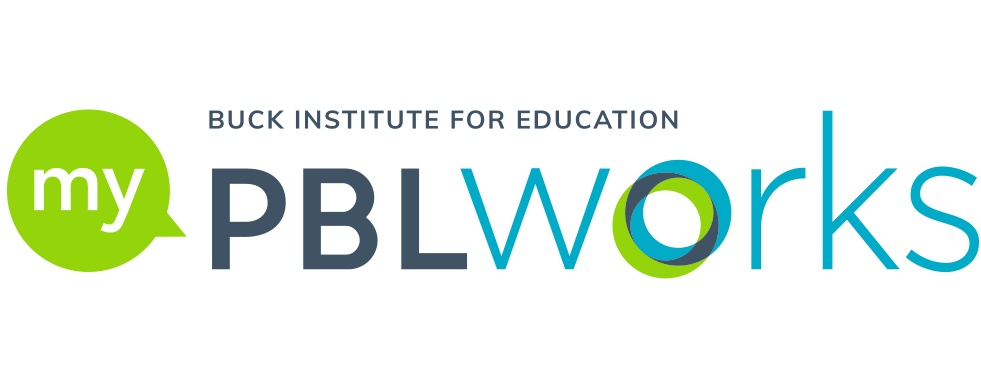Moving the Hallway Conversation Out of the Hall
Last week, I had the pleasure of working in two different school systems in two distinctly different parts of the country: sunny and warm Bassett, California and snowy and cold Bismarck, North Dakota. Putting these two BIE district partners into a Venn diagram together might, at first, sound ridiculous. Filling the outer circles would be easy. You could easily find examples of differences in climate, landscape, culture, etc. After facilitating a leadership workshop in each district as part of BIE’s PBL Leadership Development Program, though, it was clear that these two systemic partners actually had quite a bit in common. At the center of the Venn diagram are two districts dedicated to creating transformative learning experiences for their students through the systemic implementation of PBL. As such, both districts recognize the power of teams and the necessity of intentional and protected time for collaboration.
In Steve Johnson’s TED Talk Where Good Ideas Come From he says, “chance favors the connected mind.” By this he tells us that when we are connected to others, in person or virtually, our own ideas mingle with the ideas of others, which leads to even better ideas. This is how many things we surround ourselves with, like the Internet, finally came to be. As educators, we know this to be true as well. How often do walk down the hall thinking about something, ideas ruminating in our heads to the point that when we bump into someone and start having a hallway chat they can’t help but come tumbling out? The person we’re talking to starts thinking and sharing his or her ideas with us and by the time we walk away, our idea is more fully developed and we’re ready to move it forward.
Those hallway chats are the chance conversations we love. What would happen if that same type of conversation was more purposefully planned? How many great ideas might happen as a result? What are the real benefits of adult collaboration? These questions and others pushed the thinking of the leaders in both the Bassett Unified School District and the Bismarck Public Schools this week.
The importance of conversations among leadership teams
When BIE works with partner districts and delivers the PBL Leadership Development Program, one of the non-negotiables is that district and site-based teams, not just individual leaders, participate. No one or two administrators in a district or principal in a school can make systemic change alone. We ask that the teams include not just administrators but teacher leaders as well. It takes the efforts of many to move the dial. In addition, planned and purposeful change is a process that requires leaders to have a varied skill set. With a team, a principal can capitalize on the strengths of the different members to accomplish the work.
In Basset and in Bismarck, school teams started their work together in September, and this month celebrated their successes thus far and assessed their next steps as they look ahead to next year. The Leadership Development Program, by its nature, brings teams from across the district together to share in the work of PBL implementation. As sites share successes, struggles and ideas with each other, the power of creating intentional and protected time for important work to happen becomes evident. There is nothing more rewarding as a facilitator than hearing a high school leader share thoughts about how valuable it was to collaborate with a middle school or elementary school team or vice-versa. When teams work together “good ideas collide.” The Leadership Program creates the intentional and protected space within a system for this to happen at the district level, and the leadership teams recognize this as something that helps keep them motivated, focused and successful.
Creating space for teacher collaboration
As the leaders reflect on the structures that allow their work to be successful, they realize that part of their action plan for creating sustained PBL in their school must include creating space for this same intentional and purposeful collaboration time to happen for teachers. Collaboration and teamwork is part of the fabric of PBL. Teachers who are on their PBL journey need time with each other to plan, reflect, revise, celebrate and problem solve just as much as their students do.
Though not always easy, leaders, as part of their work in supporting their staff, need to assess current schedules and structures to find or create time for teacher teams to meet on a regular basis. In Basset, one leadership team talked about bringing all the students together with the principal and counselors for character development assemblies, giving the teachers that hour to work together. In Bismarck, leadership teams talked about redefining some of the collaborative times that already exist within their schedules to allow for teacher teams to work together. How a site chooses to create the spaces for teachers to collaborate will differ from one to the next. There is no perfect schedule out there, but leaders who are truly dedicated to implementing sustained PBL find ways to intentionally allow good ideas to come together.
Structures and spaces for leaders, teachers and students to collaborate can be formal or informal. Hallway conversations don’t go away, but as PBL leaders we need to ensure that we are intentionally creating, providing and protecting time for our staff to share their ideas, reflect on their work and get support. Although “chance favors the connected mind,” we should not leave something as important as the success of Project Based Learning to chance. Fortunately, the Bassett Unified School District and the Bismarck Public Schools share similar thinking. As they both continue to implement sustained PBL, they aren’t leaving connection and collaborating to chance. They’re planning for it!
Do you have questions, tips, or stories to tell about collaborative conversations? Please enter them in the comments below.
For more information about BIE’s systemic services, click here.
To view or download this resource, log in here.
Login